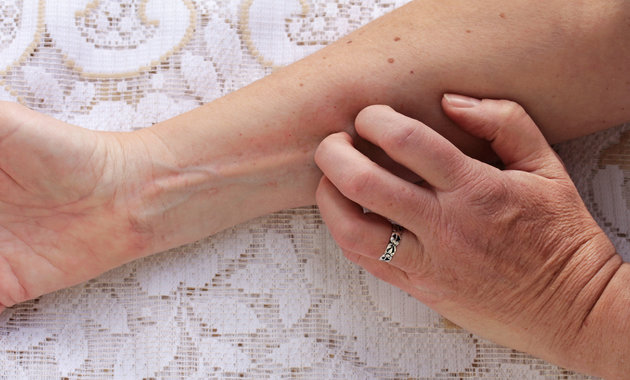Diabetes comes along with many complications that are known to affect the heart, brain, and eyes. But were you aware that skin complications too are possible? In some cases, these skin problems can often be the first sign of diabetes. Here is an overview of various skin problems associated with diabetes and how to prevent and manage them:
How can you identify a skin problem related to diabetes?
-The first step is to be aware and identify these skin complications. We often tend to ignore certain changes in our skin until they turn nasty.
-Diabetic skin complications usually have characteristics like multiple spots around an area, extremely dry skin, red or yellow patches, skin hardening, groups of blisters or boils, open wounds, an outbreak of reddish bumps, scaly patches around eyelids or ash-like skin.
-If such changes have come about, without any other external cause (such as a burn or injury), they could be due to diabetes.
Talk to your doctor about these, before they get worse or worsen your diabetes.
So, why do these skin problems occur?
These skin complications are a sign that your diabetes is not under strict control. If you haven’t been serious about your food habits or haven’t been taking your medications regularly, the first step would be to get back on track and take step towards getting your blood sugar levels under control. Work with your doctor to get a better control over your diabetes. Involve a dietician to help formulate a dietary plan that you can actually follow.
How can you prevent and manage these skin problems?
These skin complications are infections and skin’s reaction to internal metabolic disturbances. It is important to take steps that would prevent the infection from spreading.
-Make sure that you pat your skin dry after taking a bath. Moisture tends to trigger fungal infections, more so in diabetics.
–Avoid hot baths as they can dry your skin or lead to further burns and rashes.
Keep the skin areas clean and covered while working or in the sun.
-Wear well-fitted shoes and maintain foot hygiene.
-Natural ointments, like aloe vera, or a hydrating lotion can be used after a shower to keep the skin moist and prevent rashes.
-If you develop a skin problem, do not scratch on and around your problematic skin areas. Do not press or fidget with them as they get infected and worsen.
–Do not start any home remedies without consulting your doctor first, as they can interfere with your current medications.
–Treat any kind of cuts or burns immediately. Trying to stop the bleeding should be your priority in case of any kind of injury.
-You can try non-prescription anti-fungal creams (like clotrimazole) for fungal infections.
-Prescription medications are always safer and more suitable. These include antibiotics for skin and stronger antifungal medications. Consult your doctor if you feel your skin lesions are not getting better in 2-3 days.
